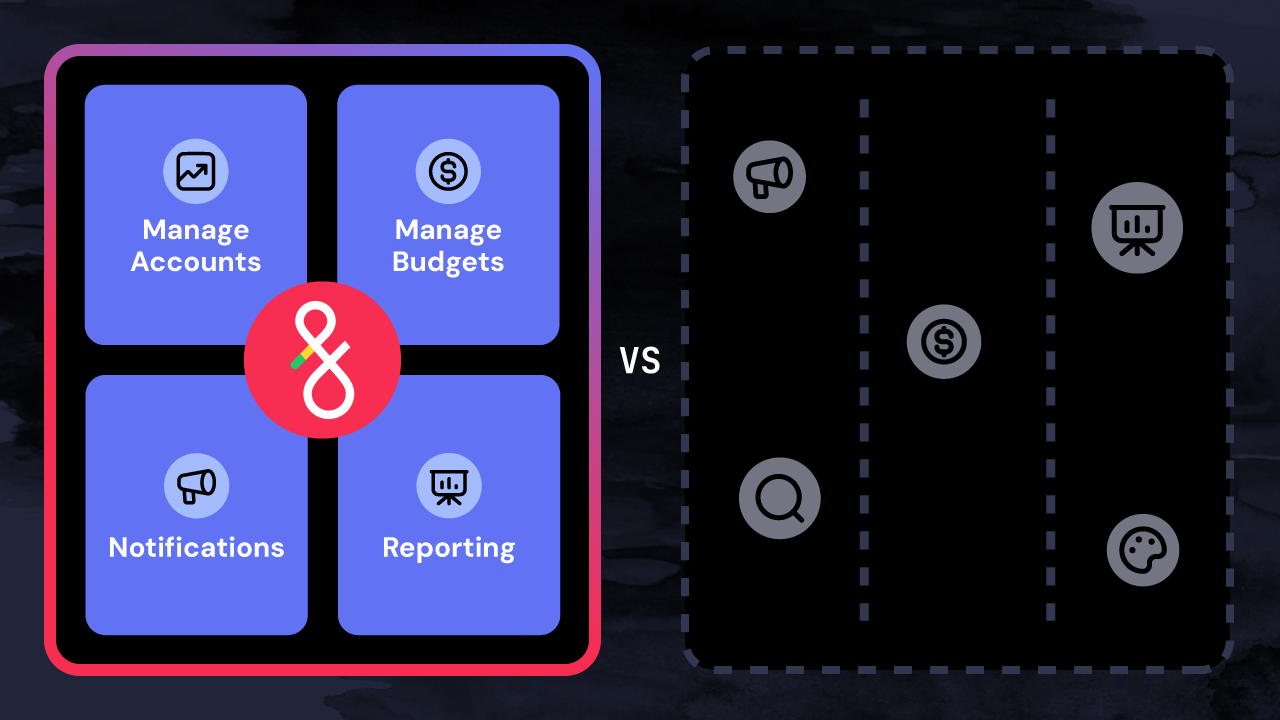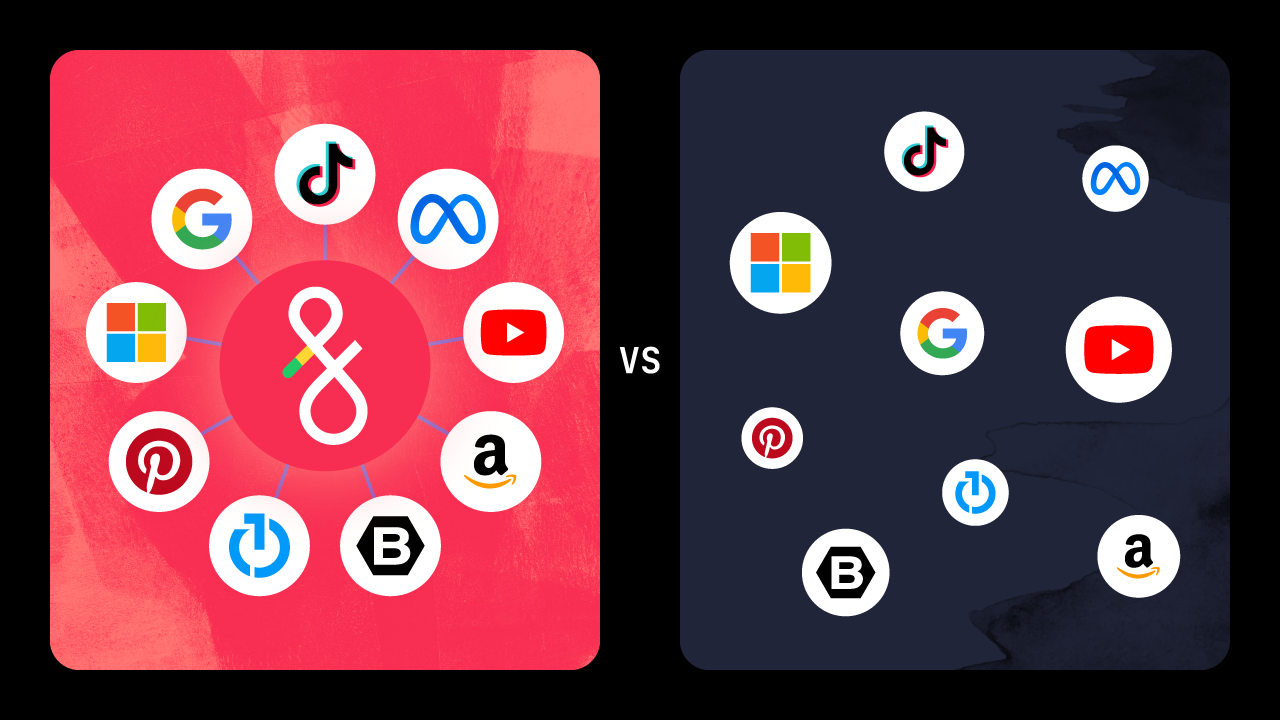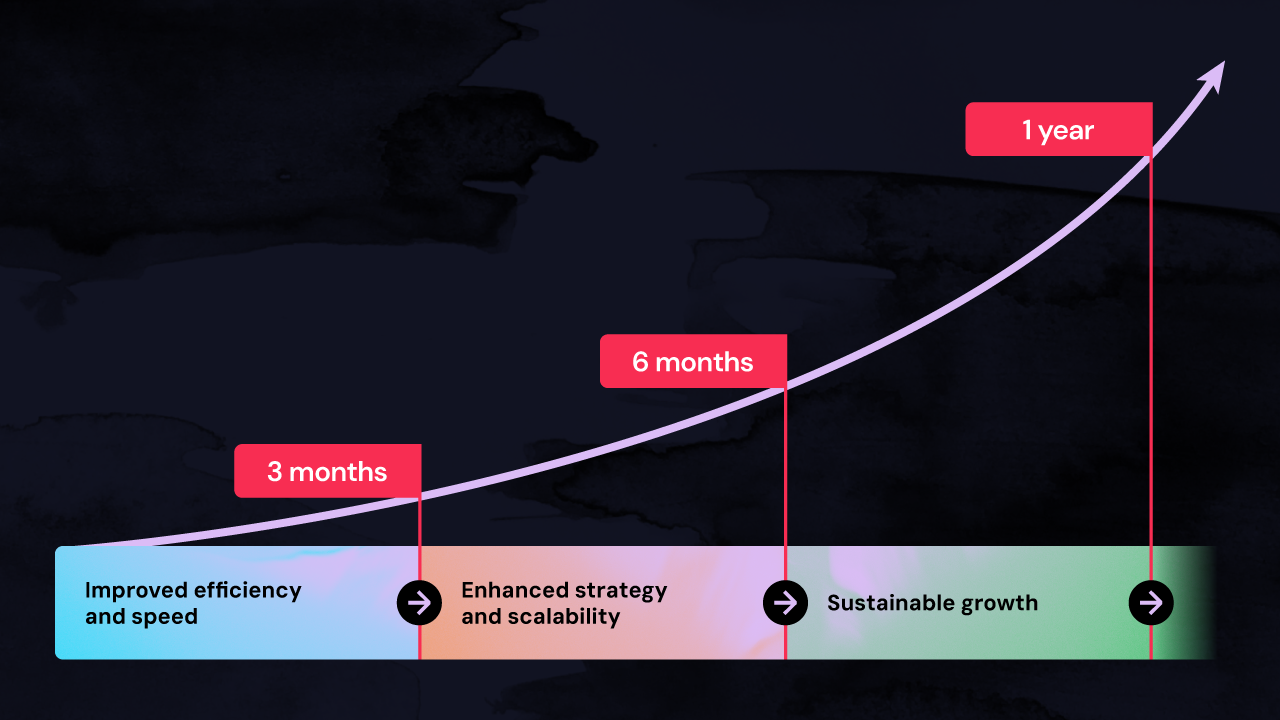Whether you’re managing 30 or 30,000 digital advertising accounts, keeping up with the demands of each one can be extremely time-consuming for your team—especially if they’re relying on manual processes. Organizations living this reality know they need a solution, as the days of increasing headcount each time you want to increase your books isn’t a sustainable model. So where do you turn? It’s time to automate your business.
For those considering automation, the benefits are well-known, and include the need to launch hundreds—or even thousands—of campaigns and ad spend by hand, as well as eliminating the manual labor involved in auditing each account every month. But while it’s true you may be ready to introduce automation to your organization, implementing automation isn't a one-and-done approach.
Put simply, automation requires commitment, alignment, and planning for how automation will be used before deployment—just ask Alex Motevosian Sr. Director, Digital of ChangeUp: “Experiencing the benefits of automation wasn’t immediate—it came from a lot of work and effort and a lot of hand-holding, but now we’re there. It’s not a push-go and everything magically works. But once you get there, and you start seeing your employees' ideas physically being put into practice, you know you’ve made the right choice.”
To understand what that commitment may look like for your organization, here's three concepts we’ll be diving more deeply into in the coming weeks.
How Is Automation Going to Advance Your Value Proposition?
The first step in preparing for automation is to take a look at your value proposition. Can you speak to what you’re selling, how you’re selling and who you’re selling to? Can you identify how automating your processes will elevate the products or services you offer? If the answer is yes to these questions, the next step is to identify where exactly your organization will reap the benefits of automating the tasks that used to take days—even weeks and months—to complete.
Are your team members spending days manually building each individual PowerPoint presentation each month? Is your organization continuously bogged down by launching and reporting delays caused by manual site tagging? These types of tedious, error-prone tasks are the perfect example of where you can start integrating automation into your business.
If you’re having trouble articulating what your value proposition is, or identifying exactly where automation will fit within your business, don’t be discouraged. This is about readiness, not eligibility. When considering an automation partner, a huge factor in choosing the right one should be a partner that can help you redefine what your value proposition is once you implement automation. And if they can’t—they’re not the right partner.
Produce a Playbook of Processes, Policies and Procedures
Once you understand how automation is going to advance—or even re-define—your value proposition, another prerequisite for preparing for automation is to review your current processes, policies and procedures. Is everything detailed? Is it easy for you to take someone on a journey of your business based on what you have documented?
While not mandatory, ensuring your current policies, processes and procedures are well-documented and easily communicable is a huge piece that can help your future ad tech partner to determine what’s automatable within your business. It’s also an opportunity for your business to receive world-class consultation in a prospect call as they can give you a glimpse into where your business is headed once you start automating critical parts of your business.
To summarize, if you can articulate your business lifecycle from start to finish, you’re more ready for automation than you think.
Transitioning Through Transformational Change
Change is often hard for organizations to accept. It means overhauling your current systems, disrupting your teams’ current processes and procedures, aligning the mindsets of your leaders, and dedicating extra time and resources to support your team through the entire process.
In short, it means planning for, coordinating, and carrying out the change to your business. To implement a change like automation effectively, businesses must be willing to commit to the long game. Just like building a house, there’s a lot of extra work and commitment upfront. But, once everything is set, everyone can start reaping the rewards.
Lastly, is your organization and its leaders willing to ensure that people at every level understand how automation is going to impact their business—both big and small? Having champions on every level that are aligned with automation and its benefits is crucial. Be ready to share the wins—like your analysts and account managers finally having time to strategically plan with their clients, rather than getting bogged down with time-consuming spreadsheets each month. As a result, you and your leadership team will see improved employee morale, and in turn, a natural increase in accuracy, productivity and reliability among teams. Properly conveying these benefits will get everyone excited and on board.
Looking for an Automation Partner? Meet Fluency
As you prepare for automation, taking these fundamental steps will ensure the implementation of automation is set up for long-term success. Looking for an automation partner to get you over the start line? Meet Fluency’s Robotic Process for Automation (RPA4A)-enabled platform. “Fluency doesn’t just deliver an integrated technology platform; they deliver something far more important to their clients: time,” says Alex Motevosian of ChangeUp.
If you’re ready to learn more about how your team can scale its efforts across hundreds—or even thousands—of campaigns, and start improving profitability and opportunity across your organization, we invite you to connect with our team to learn more about our process.






